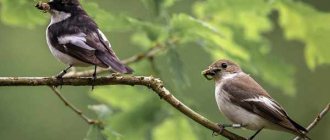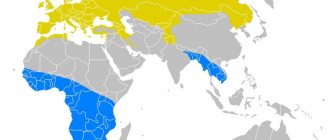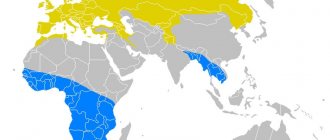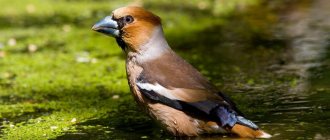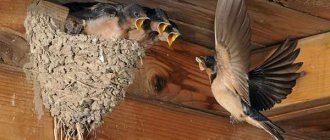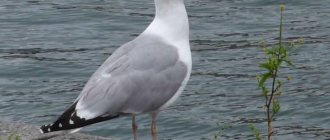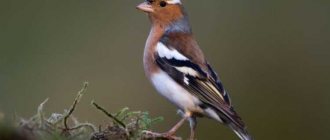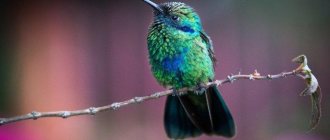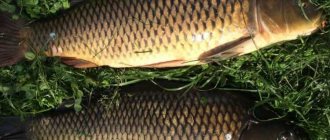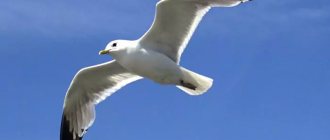Since ancient times, people have loved to observe the life of birds. Not all of them are distinguished by their bright colors and outstanding vocal abilities. Nevertheless, their habits and behavioral characteristics are of interest not only to ornithologists, but also to many nature lovers.
Our heroine today (the little flycatcher) is a very small bird. Back in the sixties of the last century, it was considered very rare in the Central Black Earth Region, but today it has become a common inhabitant of protected forests. Moreover, the small flycatcher is a bird that now feels quite comfortable in city parks. In recent years, this gray bird has begun to settle on city streets.
Little flycatcher: distribution
This bird is widespread in Europe. In almost every country, these small gray birds settle in open spaces, preferring open forests, clearings, and open forest clearings. They often choose rural areas to live. They are not at all afraid of being close to people; moreover, in villages and hamlets, their favorite food - flies - is abundant.
In Russia, the small flycatcher (pilot) nests north of the Leningrad region. In the south it is found up to the borders of the treeless steppe parts of Ukraine and in the Lower Volga region. In addition, there are populations in the forests of the Caucasus, in Northern Iran, and on Kopet-Dag.
The small flycatcher, whose distribution patterns are most often due to the reduction in the area occupied by spruce, prefers coniferous plantings. These birds nest in spruce-deciduous forests and spruce forests, sometimes overgrown and deaf.
The small flycatcher, a description of which can be found in many publications on ornithology, flies to the countries of North Africa for the winter.
Description and features of the flycatcher
Among the feathered tribe, there are many representatives who bring undoubted benefits and are orderlies of forests, gardens and parks, and active destroyers of harmful insects. These include the flycatcher - a bird weighing only up to 25 grams.
Scientists classify it as a passerine. Its representatives are classified as a separate family, which, in turn, is divided by biologists into two broad genera, famous for their enormous diversity of varieties.
These are true and variegated flycatchers. In size, such birds reach no more than 15 cm and are similar in size to sparrows - their relatives, but are distinguished by their external features by the color of their plumage, which is known for its diversity and depends on the variety of these birds.
Real flycatchers for the most part have discreet colors, among them brown, gray, olive colors with white and black splashes can be distinguished. But the colors of variegated flycatchers are much richer. Representatives of this genus come in red, orange, blue and yellow, and are famous for other bright colors of plumage.
The wings of such little birds, the span of which is about 20 cm, look quite long in comparison with the size of their small body, but are not wide at all. Their legs are weak and do not allow their owners to move far and quickly on them.
The beak is powerful and has a remarkable structure, without clarification of which the description of the flycatcher will not be complete. It is wide and flattened, with a prominent ridge at the beak.
Along the edges of the beak and at the base you can see elastic bristles, which in some species even cover the nostrils. The tail of most varieties is straight and short, usually ending in a notch.
The range of such birds is quite extensive. In Europe, these birds are found almost throughout the continent. To the east, their habitat extends up to the ridge of the Ural Mountains and further across the expanses of Siberia.
They are also found in Central and South Asia, find refuge in the Caucasus and even further south, even in Africa, where the flycatcher bird . But the migratory or wintering behavior of this representative of the feathered tribe directly depends on its habitat.
The winged wanderers that inhabit the northern regions migrate during unfavorable periods, flying to wintering in India, somewhat to the west - to Pakistan, Iraq, Syria and to the south - to African countries. For this reason, these birds are usually classified as migratory.
Small flycatcher: external features
The small gray bird belongs to the passerine order, the Flycatcher family. Its dimensions are small (no more than 12 cm), its plumage is rather dull, which is more of an advantage than a disadvantage: it is not so easy for birds of prey to notice.
The small flycatcher has a slender, slightly elongated, oval body. The tail is thin and long. The head is large with large dark eyes. Medium sized black beak. Paws are dark with short claws. The small flycatcher, whose voice is quite sonorous, makes rather original sounds. The song of this bird consists of two or three repeated “circles” and four or five whistle sounds, which follow further, with a decreasing pitch. This simple melody does not mix with the voices of other birds, and is long lasting and easy to remember.
Types of flycatcher
In total, scientists count about three hundred species of these birds in the world, but in Russian regions there are much fewer of them, more precisely, no more than fifteen. The most notable of them can be seen in the photo . flycatcher differs from another mainly in the color of its plumage.
Species that deserve special mention include the following:
1. Gray flycatcher . The coloring of this species is discreet and modest: the top is brown-gray, and below there are small light inclusions. Not having the habit of hiding from people, these birds often settle near country houses and are found in public gardens and parks.
Although even in plain sight, such birds remain inconspicuous, which is greatly facilitated by their simple color. He also helps them build nests and safely raise their offspring in close proximity to the signs of civilization and human habitation, while remaining unnoticed. This bird makes sounds very rarely, and its song is quite simple, as is its coloring.
Gray flycatchers
2. Pied flycatcher . Males of this species are similar in color to magpies, having black and white plumage, white spots on the wings and forehead, and an abdomen of the same color. Brown-gray females look much more inconspicuous. Representatives of this species are famous for their omnivorous nature.
When building their nests, pied flycatchers settle in tree crevices and hollows. Like representatives of the previously described species, they are not afraid of people and often even choose artificial nests.
Pied flycatcher
3. Small flycatcher . Externally, it is similar to the Zoryanka, differing from other species by a red spot, which is located on the chest and is most noticeable in the male half, standing out for its large size. The weight of representatives of this rare species is about 11 grams, and the body length is no more than a decimeter.
During flight, small flycatchers have clearly visible white spots on their tails. Birds of this species have the ability to make very interesting sounds, which are a mournful, mournful alarm whistle.
Little flycatcher
4. Paradise flycatcher . The very eloquent name of this impressive bird speaks of its extraordinary beauty, which turns out to be an indelible impression on everyone who is lucky enough to see such feathered creatures. Its plumage is contrasting and bright. Its tail is huge, and is at least twice the length of its body.
This species has thirteen subspecies. On the territory of our huge power, this species can only be found in the Primorsky Territory. It is also found in the Philippines, Indonesia, China and many other countries with warm climates. Such birds live in dense forests, trying to hide away from civilization and housing, as well as prying eyes.
Paradise flycatcher
5. Royal flycatcher . Such birds also belong to the type of very remarkable birds with an original and bright appearance. Their appearance is distinguished by a striking colorful crest on the head, similar to a crown (for which these creatures received the indicated name).
But royal flycatchers do not always display such decoration to others, but only during the period of courtship and mating. This variety includes four subspecies.
Royal flycatcher
6. Thrush flycatcher . It belongs to the category of poisonous representatives of the feathered tribe, and is the only one, unique and inimitable of its kind. The fact is that it feeds on poisonous insects, so its skin and feathers are literally saturated with a disgusting, harmful liquid.
But this does not harm the health of the bird, which is one of the unusually original flycatcher species It is assumed that in this way these creatures receive protection from dangerous predators. The birds are orange and black in color and live in New Guinea in local forests.
Blackbird Flycatcher
Color of males
In an adult male, the sides of the head and the upper part of the neck are brownish-gray or dark gray. The rump and back are grayish-brown. The uppertail coverts are velvety black. The small flycatcher of the European subspecies has a large spot of bright red or buffy color on the crop, neck, and upper chest. The intensity of the spot color and its size depend on the age of the bird. It is larger and brighter in older males.
From the neck, the gray color spreads to the sides of the breast and is bordered by a red spot along the edges. The lower part of the chest and lower tail coverts, belly are white. The underwing coverts are white to light buffy. The upperwings and primary wing coverts are brown. The central tail ones are black, the rest are two-colored: white at the base and black at the top. The beak is brown-brown, slightly lighter at the base of the mandible. Legs are brown-black. The iris of the eyes is brown.
Little flycatcher
| Latin name: | Ficedula parva |
| Squad: | Passeriformes |
| Family: | Flycatchers |
Appearance and behavior .
A small (noticeably smaller than a sparrow), very mobile flycatcher of compact build with a relatively short beak, wings, and tail. The stance (slightly raised body, swaying tail, lowered wings) resembles a pied flycatcher. Characterized by a large, rounded, “browed” head, usually “pulled into the shoulders.” Description . Birds of any sex and age have a T-shaped black pattern on the tail, which is clearly visible in a flying bird. The middle pair of tail feathers is entirely black, the remaining tail feathers have white bases and black tips: a clear border runs approximately in the middle of the length of the tail feathers. The tail coverts of adults are also black; those of first-year birds are dark gray, in contrast to the first-year birds of the eastern little flycatcher, which have black tail coverts. From below, the tail appears white with a wide black apical stripe. A good distinguishing feature when viewed at close range is also the narrow light orbital ring, which “emphasizes” the large dark eye. The back of adult birds is monochromatic, brownish, the wings are slightly darker. An adult male has a gray head, a red spot on the chin and throat extends to the chest, but, unlike the Robin, does not include the forehead and cheeks. The border between gray and red is sharp on the cheeks, neck, sides of the chest, and on the light belly the red color spreads gradually, without a sharp border (unlike the Robin and the Eastern Little Flycatcher). The sides, underbelly, and undertail are pure white.
The first-year male does not have a throat spot and is similar to the female (unlike the male eastern little flycatcher); the second-year male has a small spot, with blurred boundaries, and a brownish head. The female is brownish with a light underparts, the sides of the chest are covered with a brownish-ochreous coating (in the female eastern small flycatcher the coating is brownish-gray, extending to the middle of the chest, outlining the white throat below). Very rarely, old females have a blurry red throat patch, like second-year males. Birds of both sexes at all ages have black legs, a dark beak with a yellowish base of the mandible; by this feature they differ from the eastern little flycatcher, which has an entirely black beak.
Young birds in juvenile feathers have a brownish upperparts, mottled with buffy spots, and light underparts with an ocher tint with a faint dark scaly pattern. They differ well from other young flycatchers in size and tail color. First-year birds are colored like adult females, but retain buffy spots on the tips of the tertiary flight feathers and large upper wing coverts, and the tail coverts are grey.
Voice . The song is ringing, whistling, reminiscent of the song of the pied flycatcher, but with a stepwise decrease in tone at the end of “tritii-triti-trivi-vi-vi-vi...”. When restless, it emits a high short whistle and a dry crackling sound “and...trrr”. Males sing in the upper part of the crowns, sometimes in the middle tier. When singing a song, they characteristically twitch their slightly raised, half-opened tail. Active singing continues until mid-June.
Distribution, status . It lives in Central and Eastern Europe from forest-tundra to forest-steppes, nests in isolation in the forests of the Caucasus and Transcaucasia, up to the north of Turkey and Iran. Beyond the Urals it is replaced by a similar species - the eastern little flycatcher. The eastern boundaries of distribution have not been sufficiently clarified. Winters in tropical Asia. It is distributed unevenly in the region and is generally not numerous. Arrives at the time of leaf blossoming and leaves in August or September.
Lifestyle . Inhabits forests of various types, from broad-leaved to dark-coniferous taiga, as well as forest-steppe mosaic landscapes. Usually it stays hidden in the middle thickened tier. More often than other flycatchers, it collects food from leaves and branches and spends a lot of time on the ground in the spring. It nests in hollows and semi-hollows, usually at a height of 2–4 m; less often it builds open nests in the forks of branches. The structure of the nest is typical for flycatchers. The clutch usually contains 5–6 eggs of pale greenish, bluish or almost white color with rusty spots and specks of varying intensity. The female incubates for 12–15 days, feeding the chicks in the nest continues for the same amount of time, both parents feed. Pairs at nests are very restless, sometimes aggressive. During post-breeding migrations, the broods quickly disintegrate, and the flight goes unnoticed. It is possible that in the southern regions the small flycatcher may have two breeding cycles per season.
In the Urals, migrations of the eastern little flycatcher Ficedula albicilla, nesting in Siberia, are known. In size (body length 11–13 cm), appearance and coloring, it is similar to the small flycatcher, of which it was previously considered a subspecies. Birds of both sexes differ from small flycatchers in having an entirely dark beak; an adult male has a small throat patch that does not extend from the throat to the chest and is bordered below by gray. The first year already has a spot. The song is not as clear in structure as that of the small flycatcher, with modulations, without a stepwise decrease in tone.
Lesser Flycatcher (Ficedula parva)
Other species in this family:
White-throated Flycatcher Ficedula albicollis
Pied Flycatcher Ficedula hypoleuca
Semi-collared Flycatcher Ficedula semitorquata
Gray Flycatcher Muscicapa striata
Nutrition
The small flycatcher is not at all picky about food. According to ornithologists, these little ones eat everything that can fit into their miniature beak. The food of the small flycatcher largely depends on weather conditions: on a fine clear day, these birds catch flies, small butterflies, and dragonflies. A flycatcher will not refuse a horsefly that has flown into its hunting grounds.
In bad weather, when it is impossible to fly, the bird feeds on caterpillars, small bugs and other insects that hide from the rain in the foliage of trees. Our heroine also takes shelter from the rain there. Flycatchers hunt for almost all insects in the air, however, they do not ignore creeping species.
It is interesting that the flycatcher can deftly lift fallen leaves with its beak and under it it will definitely find some food for itself. These could be spiders, ants, small bugs, etc.
Nest construction
It is interesting that the flycatcher (female) builds its nest only with natural materials. She carefully weaves it from moss, thin grass stems, wood fibers, and bird down. The outside of the bird sometimes covers it with lichen and thin twigs.
The inside of the tray is lined with moss, hair-like tendrils of climbing plants, and a small amount of horsehair is used. An open nest (not a hollow) is usually shaped like a small bowl. It does not exceed 50 mm in diameter and 45 mm in depth. It is difficult to detect the nest of a small flycatcher, since it is well camouflaged, and the birds are very careful and stay in the upper branches of trees.
Reproduction
A flycatcher can nest very close to a person: under the roofs of houses, on lamp posts, in gardens. This bird will not refuse to live in the abandoned nests of other birds. These small gray birds arrive at their nesting sites quite late.
The mating season of these birds is interesting: the male flycatcher finds an empty hollow, settles down next to it and begins to perform mating serenades. Hearing love trills, the female flies to her “groom”. But there are also small overlaps, when the male manages to occupy not one, but several empty hollows. Then he lures the “brides” first to one dwelling, then flies to the next, where he also emits wedding trills and the next female flies to him. Thus, the male flycatcher becomes the owner of a “harem”.
But we must give him his due: the male fulfills the role of father and head of the family with full responsibility. During nesting, he protects the nest and his offspring. The male helps the females feed and care for the yellow-throated chicks. To do this, a father with many children flies from one nest to another. Ornithologists have established an amazing fact: during the nesting period, a family pair of flycatchers makes up to five hundred flights per day for food and back to the nest to feed their yellow-throated chicks.
It is not surprising that the flycatcher is considered a very useful bird: the destruction of such a huge number of insects is an undeniable advantage of these birds.
Features and habitat
The world of birds is very diverse, there are different representatives in it, many of them are inconspicuous, but this does not make them any less interesting. Today's story will be about such birds.
Meet a unique bird called flycatcher . There are more than three hundred species of these birds on earth and it will not be possible to tell about them all, so we will present to the reader the three most common species that live in our latitudes, namely the small flycatcher, the pied flycatcher and a bird called the gray flycatcher .
These types of flycatchers choose open spaces for living and therefore settle in open forests, where there are many open forest clearings and clearings. There are many of these cute little birds that live in rural areas; they are not afraid to settle close to people, and their favorite food, flies, is known to be in abundance in villages and villages.
In the photo there is a pied flycatcher bird
Flycatchers are migratory; with the arrival of winter, birds from Russia fly to different countries with warm climates, for example, the gray flycatcher and pied flycatcher go to the African continent for the winter, and the small flycatcher prefers to fly to the southern regions of Asia for winter holidays.
It should be noted right away that all flycatchers are small birds, no larger than a sparrow, but their colors are much more varied. For example, in taiga forests you can find multi-colored flycatchers, where, along with white and black shades, there will be rich shades - bright blue, lemon, ripe cherry color and even orange color.
Nature rewarded males with bright plumage, while females are always more inconspicuous. As mentioned earlier, the gray flycatcher lives in our neighborhood and the name speaks for itself, because this bird cannot boast of bright plumage.
In the photo there is a gray flycatcher bird
It is an inconspicuous gray color with brown specks on the wings and light markings on the abdomen. Flycatchers have long and narrow wings. Having looked at the photo of the flycatcher bird , many will probably see the bird that lives next door.
All varieties of flycatchers have a fairly wide beak, at the base of which elastic hairs are symmetrically located; in some bird species, these hard bristles can even cover the nostrils.
This device helps flycatchers to catch insects right in flight - a favorite delicacy of birds. It should be noted that these birds are good at catching insects on the fly; they do it very deftly, and at the moment when the victim is caught, the bird’s beak slams shut and a characteristic sound resembling a click sounds.
The appearance of chicks
In June, eggs appear in the nest, of which there are usually no more than six. The shell is colored bluish interspersed with dark shades. The female incubates the eggs herself for two weeks. Egg dimensions 19 x 14 mm. Sensing danger, the birds fly around the nest with restless cries, sometimes they can even imitate an attack on an uninvited guest who is trying to inspect the nest, swooping down on it, curling up right next to its face.
Both parents feed the chicks. The offspring grow very quickly, and by the age of one month they become independent. And during this time the parents manage to make a second clutch.
Chicks: plumage
The first plumage of the chicks is brownish-brown on top with light buffy spots on the feathers. The craw, throat and upper part of the breast are pale buff with a scaly brown pattern. Its intensity decreases in the upper part of the abdomen. On its lower part the drawing is completely absent.
The lower tail coverts are white. The first post-nesting (winter) plumage of young birds is very similar to the color of an adult female. However, on the upper and primary coverts the edges are less pronounced. The change of nesting plumage in young birds from early broods begins already in mid-June. This partial molt covers almost all the small feathers, excluding the outer upper coverts and secondaries.
In offspring from later broods, the first moult, as a rule, ends in late August-early September. During wintering, only rare first-year birds have individual red feathers on their throats. Adults molt twice a year: completely during the pre-nuptial period at wintering sites and during the post-nuptial period at nesting sites.
